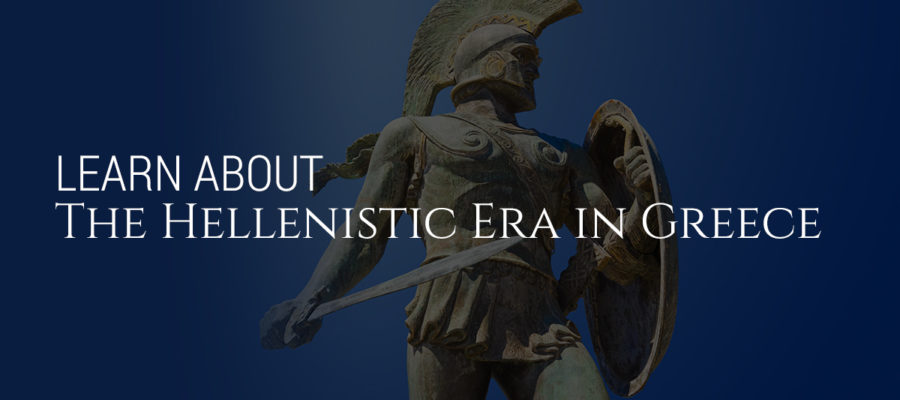The Hellenistic Era in Greece is one of the most important eras in history. In our last blog, we discussed the Classical Era in Greek history. The Classical Era spanned the years 500 BC to 323 BC, up to Alexander the Great’s death. The Classical Era was marked by extensive warfare, with the Greeks and the Persians constantly battling for domination. During the famous Battle of Salamis, the Greeks finally defeated the Persians.
With Alexander the Great’s passing in 323 BC, the enormous Greek kingdom was handed over to five of his generals. The empire’s three main kingdoms were located in Egypt, Asia Minor, and Macedonia. Absolute rule by kings replaced the previously democratic societies that characterized Classical Greece. The era following the Classical Era spanned 323-146 BC, and is known as the Hellenistic Period. The word “hellenistic” comes from the word “hellazein,” which means to speak or identify with Greeks. Today, we would like to explore the Hellenistic Era in greater depth.
The Return of Kingdoms
The democratic societies of the Classical Era were replaced by the autocratic rule of kings. With the new governing society, the kings enjoyed displaying their wealth. The architecture, artwork, and jewelry reflected their extravagant tastes.
 The Architecture
The Architecture
The Architecture The architecture of the Hellenistic Period includes elaborate banquet halls and lavishly decorated rooms. Hellenistic kings frequently commissioned public sculptures and architecture. Many libraries and museums emerged during this time period to document Greek history.
Hellenistic Art
The increased attention to history during the Hellenistic period was also reflected in its artwork. New forms of the Greek gods emerged in Hellenistic Greek art. For instance, Aphrodite, the Greek goddess of love, was frequently shown in this period’s art in her undressed state. One of the other gods frequently represented in works of art during this period was Dionysos, the god of wine who overthrew the Eastern empire. Affluent art patrons commissioned bronze sculptures, elaborate furniture, and exquisite pottery.
Hellenistic Philosophy
With the return of autocratic societies, Greek citizens felt disillusioned by the new form of government. Philosophers reflected inward and criticized the commercialism and the elaborate displays of wealth by the new government. Some of the famous philosophers of the era included Diogenes the Cynic and Epicurus. Epicurus philosophized on the importance of the individual’s pursuit of happiness.
The Hellenistic Era in Greece, Coins
Because the Greek empire had expanded into Egypt by the Hellenistic Era, the coins of the time included portraits of their leaders. Previously, portraits of living kings were included in Greek coins, but the majority of people considered the practice to be rather egotistical. However, the Egyptian leaders considered themselves to be divine, and they had no problem using their images on their coins. The rest of Greece adopted similar portraits in their own coins without the social stigma of the past. Hellenistic coins were also handmade, and were made out of gold, silver, or electrum.
The major characteristic of the Hellenistic Era was the shift from a focus on the collective to the focus on an individual. More elaborate displays of wealth dominated the architecture and artwork of the time period. Hellenistic coins reflected the focus on the individual with their portraits of leaders. If you are fascinated by old Greek coins, then check out our selection of ancient gold coins. Our ancient gold coins are the highest quality and have weathered the test of time beautifully.

